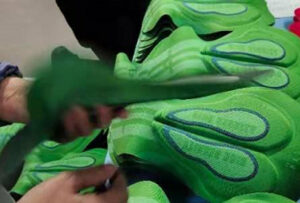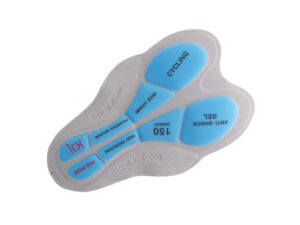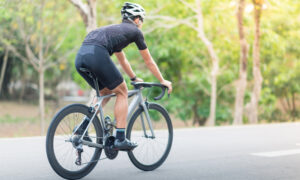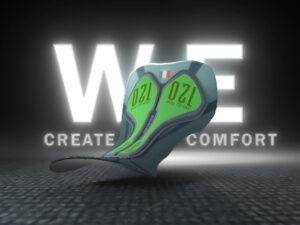Triathlon cycling poses a unique set of challenges, demanding not just intense physical preparation but also specifically tailored gear to maximize performance and comfort. One of the pivotal pieces of equipment for any triathlete is the cycling pad. Serving as a critical interface between the cyclist and their machine, triathlon cycling pads are engineered to reduce discomfort and prevent injuries during long, strenuous rides. This article provides a detailed look at the different types of Triathlon Cycling Pads, their features, installation tips, and much more, aimed at both new and experienced triathletes looking to enhance their racing experience.
Table of Contents
Introduction to Triathlon Cycling Pads
Overview of Importance in Triathlons
In triathlon, where cycling segments can often be grueling, the importance of high-quality cycling pads cannot be overstated. These pads play a crucial role in providing comfort and reducing the impact on the rider’s body, which can be the difference between a personal best and a painful race. By mitigating the vibrations and shocks absorbed through the bike during long-distance rides, a good cycling pad helps maintain the athlete’s focus and stamina.
Evolution of Cycling Pads
Triathlon cycling pads have evolved significantly over the years. Initially, these pads were simple, minimally effective foam pieces that offered basic cushioning. However, as triathlons have grown in popularity and the demands of the sport have become better understood, cycling pads have transformed into sophisticated components. Modern pads incorporate a variety of materials, such as advanced foams, gels, and hybrid designs, each offering distinct benefits. Innovations in this field have focused on enhancing ergonomic comfort while ensuring that the pads can endure the harsh conditions of triathlon racing.
Types of Triathlon Cycling Pads
Gel Pads
Gel cycling pads are renowned for their superior cushioning abilities. They are designed to mold to the cyclist’s body, providing a custom fit that distributes pressure evenly, which is particularly beneficial during long rides. The gel’s properties allow it to absorb shock effectively, minimizing the fatigue and discomfort that cyclists might experience.
Foam Pads
Foam cycling pads are preferred for their lightweight and supportive characteristics. Made from dense materials, these pads offer a firmer ride, which some athletes believe helps in transferring power more efficiently during pedaling. Their resilience and ability to retain shape over time make them a durable choice for triathletes.
Hybrid Pads
Hybrid cycling pads combine the benefits of both gel and foam technologies. These pads are crafted to provide the perfect balance of comfort and support, making them suitable for a variety of conditions and personal preferences. Hybrid pads are particularly advantageous for triathletes who value versatility and performance in their equipment.
Key Features to Consider
Comfort
The foremost feature to consider when selecting a triathlon cycling pad is comfort. The right pad significantly enhances the riding experience by reducing saddle discomfort and preventing potential injuries related to prolonged seating in a rigid position. Comfort is subjective and varies based on a rider’s physiology, the bike’s design, and the type of triathlon.
Durability
Given the investment in triathlon equipment, the durability of a cycling pad is a critical consideration. A well-made cycling pad should withstand the rigors of training and competition without compromising its integrity or performance. This includes resistance to wear and tear from both the environment and the mechanical aspects of the bike itself.
Material Technology
The materials used in cycling pads directly impact their functionality. Innovations such as moisture-wicking fabrics and thermo-regulating gels help maintain the athlete’s comfort and focus by keeping the seating area dry and cool. Advanced materials also contribute to the overall weight of the pad, which can affect the bike’s weight and the athlete’s energy expenditure.
Installation Tips
Step-by-Step Installation Guide
Proper installation of a triathlon cycling pad is crucial for achieving the maximum benefit from this equipment. Here’s a simple guide to ensure your cycling pad is installed correctly:
- Clean the Seat: Start with a clean surface. Make sure your bike seat is free of dirt and debris to prevent the pad from slipping or moving once installed.
- Align the Pad: Place the cycling pad on the seat. Carefully align it to ensure it covers all pressure points without overhanging the edges of the seat, which could potentially cause discomfort during the ride.
- Secure the Pad: Most cycling pads come with fastening systems such as Velcro or straps. Secure the pad firmly to the seat, making sure it’s snug and won’t shift during movement. If your pad uses adhesive, follow the manufacturer’s instructions to ensure a strong bond.
- Test the Fit: Before heading out, do a short test ride to ensure the pad stays in place and feels comfortable. Adjust as necessary, checking for any areas that may irritate.
Common Mistakes and Avoidance
Avoid these common installation mistakes to ensure optimal comfort and functionality:
- Misalignment: An improperly aligned pad can cause uneven pressure distribution, leading to discomfort and even injuries. Always double-check the alignment before you finalize the installation.
- Over-tightening: While it’s important to secure the pad, over-tightening can warp the pad or cause it to bunch up, reducing its effectiveness and comfort.
- Ignoring the Seat Shape: Not all cycling pads fit all seat types. Be mindful of your seat’s design and choose a pad that complements its shape and size.
Maintenance and Care
Cleaning Tips
Keeping your cycling pad clean is essential for hygiene and to maintain its performance. Here are some tips for effective cleaning:
- Routine Cleaning: After each use, wipe down the pad with a damp cloth to remove sweat and moisture. This prevents the buildup of bacteria and odors.
- Deep Cleaning: Periodically, depending on the frequency of use, give the pad a more thorough cleaning. If the manufacturer allows, remove the pad and hand wash it using a mild detergent. Rinse thoroughly and let it air dry; avoid direct sunlight, as it can degrade the material.
Longevity Tips
To extend the life of your triathlon cycling pad, consider these tips:
- Proper Storage: Store the pad in a cool, dry place when not in use. Moisture and heat can degrade the materials over time.
- Regular Inspection: Check the pad regularly for signs of wear and tear, such as cracks, hardening, or thinning areas. Early detection of these issues can help you replace the pad before it fails during use.
Performance Impact
Aerodynamics and Speed
While the primary function of a cycling pad is to provide comfort, it also has a subtle impact on a rider’s aerodynamics and speed. A well-fitted pad allows for a more stable and streamlined position on the bike. This aerodynamic efficiency can shave seconds off your time, a significant margin in competitive triathlons.
Energy Efficiency
Comfort leads to better energy conservation. With a high-quality cycling pad, riders can maintain a consistent output for longer periods. Discomfort can lead to frequent position shifts and wasted energy, both of which are mitigated by a properly chosen and installed cycling pad. This efficiency is crucial in triathlons, where conserving energy for the final stages of the race can be the key to a successful finish.
Best Brands and Models
Popular Choices Among Professionals
When selecting a triathlon cycling pad, it’s beneficial to consider the brands and models that professional athletes favor. These brands have been tested in the toughest conditions and are known for their quality and reliability. Some of the top choices include:
- Brand X: Known for its innovative gel technology that conforms perfectly to the cyclist’s body, offering exceptional comfort and shock absorption.
- Brand Y: Features high-density foam pads that are lightweight and designed for long-lasting support and durability.
- Brand Z: Offers hybrid pads that combine foam and gel for a balanced approach to comfort and performance.
Cost-Effectiveness
While premium cycling pads can be an investment, they are often worth the cost due to their superior materials and construction. However, several affordable options do not compromise on quality. It is important to balance budget considerations with performance needs, especially for athletes who are just starting in triathlons or those who compete less frequently.
Personal Stories From Triathletes
First-Hand Experiences
Hearing from fellow triathletes can provide invaluable insights into the real-world benefits of different cycling pads. For example, John, a seasoned long-distance triathlete, shares:
“After switching to the Gel Tech pad from Brand X, I noticed a significant reduction in discomfort during the bike leg of my races. This change has allowed me to save energy and push harder during the run segment, improving my overall times significantly.”
Performance Improvements
Many athletes report noticeable improvements in their performance and comfort after upgrading their cycling pads. Sarah, an amateur triathlete, comments:
“The Hybrid Pro pad from Brand Z transformed my training rides. Its perfect balance of firmness and cushioning means I can train longer and harder without the fatigue I used to feel with my old foam pad.”
The Science Behind the Design
Ergonomics and Human Engineering
The design of triathlon cycling pads is heavily influenced by ergonomic principles to ensure optimal comfort and performance. These pads are engineered to fit the anatomical contours of the rider, reducing pressure points and enhancing blood circulation, which are crucial during long cycling segments.
Material Science Innovations
Advances in material science have greatly improved the effectiveness of cycling pads. For instance:
- Thermo-regulating Gels: These gels absorb and dissipate heat, keeping the rider cool and comfortable.
- Advanced Foams: New foam formulations offer better compression and rebound, adapting quickly to changes in posture and providing consistent support.
Material innovations aim to improve immediate comfort and enhance overall performance by reducing fatigue and increasing rider endurance.
Comparing Options
What to Choose for Different Races
Selecting the right cycling pad depends significantly on the type of triathlon and individual preferences. Here’s a breakdown of what to consider for different racing scenarios:
- Sprint Triathlons: For shorter races, a lighter pad may suffice, offering enough comfort without the bulk that might slow a cyclist down.
- Olympic Distance: A medium-density pad can provide a balance between comfort and performance, suitable for extended distances without compromising on speed.
- Ironman Triathlons: For these grueling, long-distance events, a thicker, gel-based pad is ideal. It provides maximum comfort and shock absorption, which is crucial for maintaining performance over many hours.
Pros and Cons of Each Type
- Gel Pads:
- Pros: Excellent shock absorption, molds to the body for custom fit.
- Cons: Heavier than other types, can feel too soft for some riders.
- Foam Pads:
- Pros: Lightweight, provides firm support, which can enhance power transfer.
- Cons: Less shock absorption, may not be as comfortable for long distances.
- Hybrid Pads:
- Pros: Balanced features, suitable for a variety of distances and conditions.
- Cons: May not excel in specific areas like pure gel or foam options.
Understanding these nuances allows triathletes to tailor their equipment to their specific racing and training needs, optimizing performance and comfort.
Conclusion
Triathlon cycling pads play an essential role in a triathlete’s gear, significantly influencing comfort and performance during races. We’ve explored the different types available, such as gel, foam, and hybrid pads, each with its specific benefits and drawbacks. Installation and maintenance tips were provided to ensure these critical components perform at their best. Additionally, personal stories and scientific insights shed light on the practical impacts of these choices.
Looking ahead, the evolution of cycling pads is likely to continue, with advances focusing on even better materials and ergonomic designs. Innovations might include smarter materials that adapt dynamically to changes in pressure and temperature, offering unprecedented comfort and efficiency. As the sport of triathlon grows, so too will the technologies that support its athletes.





